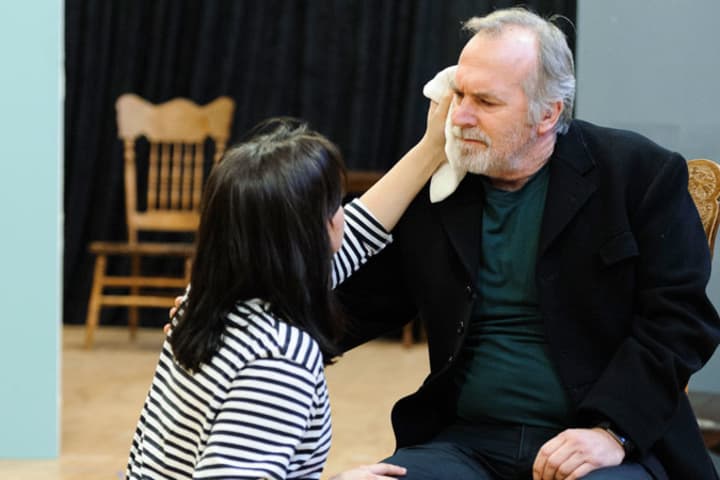Lighting Designer Niklas Pajanti tells us how lights are used to heighten and release moments of tension on stage.
How would you describe the lighting design you’ve created for A Doll’s House, Part 2?
It’s difficult to answer this question before I have created the design. I have drawn a plan but the show does not exist yet. We will go into the theatre in about 2 and a half weeks time and then I will see what it really is.
Hopefully the design will look like several things at once; the stylised interior of a home, a public forum perhaps like a courtroom or a municipal space, a boxing ring. It should feel real and unreal at the same time. The mood will probably shift throughout the show from warm and friendly to cold and interrogative and part way back again.
How are you using the lighting grid in your design?
The set designer and director presented me with the design challenge of introducing some kind of lighting grid as a set element into the show. Usually the lights in a play don’t move during the show. They are rigged or set at a certain height above the stage area and stay up there. In this show the grid of lights I have designed will gradually fly in, getting closer and closer to the performers. And then at the right moment it will fly out again.
It represents several things; interrogation and increasing pressure in the dialogue, the inescapable future crashing in to these peoples lives, the unavoidable fact that the world changes whether you want it to or not, technology and the modern world, an abstraction of a boxing ring as the characters circle each other, attacking, counter attacking, looking for weaknesses in each others arguments.
You should notice that everything below the line of the projection screen is historically accurate (the past) and everything above that line is modern (the future). These are deliberate choices and visual references that match the themes of the play.
How are you using darkness or an absence of light?
I don’t know yet … I’m not sure if this show will be particularly dark. But in general terms you cannot have light without dark. Shadows and darkness are, ironically, what help you see. If everything reflected light equally everywhere we would not see details in anything and gauging depth and distance would be difficult. Darkness, shadows and the absence of light provide us with scale and the contrast between objects and people that we need for visual perception. I’m always aware of that in my work.
What opportunities/challenges are presented by the script or other design aspects, for example video projections and paint colours.
The writer states right at the start of the play that the space should feel a touch like a forum. If you investigate the meaning of that word many possible lighting concepts become apparent. We have pursued several of those in this production.
This show has video projection so as a Lighting Designer my job is to make sure that the content is visible when it is meant to be and that we ignore the screen when nothing is being projected. I try to show you where to look at the right time by adjusting the lighting levels at the appropriate moments. This show design has very particular colour choices on the floor and walls and in the costumes. Hopefully the lighting makes all of these elements look beautiful, or ugly, as required. I also closely follow the sound design. We work together to help tell the story and facilitate transitions and heighten or release moments of tension.
How did you arrive at your design choices? What influences have there been, and what practical considerations?
Arriving at my design choices is my job in a nutshell. I have to make a bunch of difficult choices in a short amount of time, all before the show has even been made. I have to decide where to hang lights, what colour they will be and when they will turn on and off, over what length of time.
I’m influenced by many things; the content and themes of the script, the desires and vision of the director; the environment, surfaces and colours provided by the Set Designer and Costume Designer; the need for visibility from the audiences point of view, the available equipment, the shape of the stage we are putting the show into and the available hanging positions for lights. So many things! Let alone how I imagine the show could look. My job is to collaborate with many people and departments. I arrive at my design choices because I have deadlines.
Is there anything else about your lighting design that you’d like to share with students?
Don’t spend too much time thinking about the lights. I’m working in the background to gently manipulate you into engaging with what’s happening in front of you in real time, so pay attention! My design is there primarily to let you see the actors onstage telling you a story. Watch them. Listen to them. If you do notice the lights, remember that I’m doing things for very deliberate and considered reasons, to add layers of meaning to what’s going on in the play.
A Dolls House, Part 2 plays at Southbank Theatre from 11 August 2018.
Published on 17 July 2018





